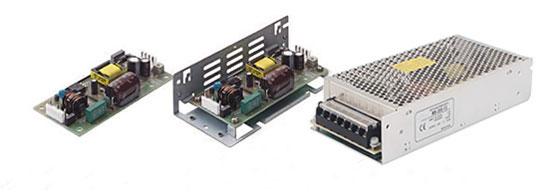Switching Power Supply Troubleshooting & Repair Guide
Switching power supply troubleshooting
1. Blown fuse
In general conditions, blown power fuse indicates problems in internal circuits. The power supply operates under high voltage and current. Voltage fluctuations or surges of power grid often give rise to instant increase of current, which may result in blown power fuse. Users should check whether there is breakdown, open circuit or damage on rectifier diode, HV filtering electrolytic capacitor, and inversion power switch tube at the input end. If the power fuse is blown with no indication of other problems, users need to check components on the circuit board to check whether they are burned out with leaked electrolyte. If there is no such condition, users should check whether there is breakdown or short circuit by multimeter. Users shall not start up the equipment even after finding out and replacing the damaged part, because HV components with malfunctions may damage the newly-replaced part. When dealing with blown power fuse, users must check all HV components on the circuit board before starting up the equipment.
2. No DC output or unstable voltage output
If the power fuse remains in perfect condition but there is no DC output at various levels in loaded condition, it may be caused by open circuit, short circuit, overvoltage, overcurrent, failure of auxiliary power supply, failure of oscillating circuit, over load of power supply, breakdown of rectifier diode in high-frequency rectification and smoothing circuit, or electric leakage of smoothing capacitor. If voltage output remains zero after checking secondary components by multimeter and clearing breakdown, overload or short circuit of high-frequency rectifier diode, it can be confirmed there is problem with control circuit of power supply. If there is voltage output at some parts, that means the onboard circuit works properly and it is problem of high-frequency rectification and smoothing circuit. High-frequency filtering circuit mainly uses rectifier diode and low-voltage filtering capacitor to output DC. If the rectifier diode breaks down, the circuit will be unable to output voltage. In addition, electric leakage of filtering capacitor results in unstable voltage output. Damaged components can be found out by checking relevant parts with a multimeter.
3. Poor load capacity
Poor load capacity is a common malfunction. It is often seen at traditional power supplies or those which work for long hours. It is caused by aging components, unstable switch tube, or poor cooling condition. Users shall check and confirm the status of regulated diode, rectifier diode and HV smoothing capacitor etc.
Switching power supply repair guide
Repairing the switching power supply can be processed in two steps:
1. In case of power off, users can carry out maintenance by visual check, smelling, asking and measuring.
- Visual check: Open shell of the power supply to check whether the power fuse has been blown. Check internal part of the power supply. If components on PCB are burned out, users shall check surrounding components and relevant circuit components.
- Smelling: Check whether there is burnt smell in internal part of the power supply and whether there is burnt-out component.
- Asking: Ask the damaging process of the power supply and check whether there is violative operation
- Measuring: Use multimeter to measure voltage at both ends of the high-voltage capacitor before powering on. If switching power supply fails to oscillate or presents malfunctions caused by switch tube, in most cases the voltage at both ends of HV filter capacitor is not released. As the voltage is really high, please be careful! When measuring the forward and backward resistance at both ends of AC power lines as well as charging status of capacitor, the resistance value should not be too low, otherwise the internal part of the power supply would present short circuit. In addition, the capacitor shall be confirmed to release and charge power. Then, users need to measure resistance to ground of various output ends after releasing load respectively. Normally, the indicator of the multimeter shall swing for the power releasing or charging of capacitor. The indicator is supposed to display resistance of the bleeder at last.
2. Powering-on test
Check whether the power fuse is blown and whether components are on smoke after powering on. If needed, users shall cut off power to carry out maintenance.
Measure whether there is a voltage output of 300V at both ends of HV smoothing capacitor. If it is normal, users shall check rectifier diode and smoothing capacitor etc.
Measure whether there is voltage output at secondary coil of high-frequency transformer. If it is normal, users shall check whether switch tube is damaged, whether the switch tube oscillates, and whether the protective circuit functions etc. If finding out problems in foresaid aspects, users need to check rectifier diodes, smoothing capacitors, and three-way regulation tubes at output sides.
If power supply stops after starting up, users shall check whether the power supply remains in protective status by measuring protective voltage of PWM chip. If the voltage exceeds the specified value, which means the power supply is in protective status and users shall find out reasons for the protective status.

